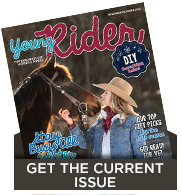Taking care of our equine friends is no small feat, and equestrians often rely on an extensive team of equine professionals to help ensure their mounts are in tip-top shape. Just like people, horses often need care from a chiropractor that can provide relief for their aches and pains. Are you passionate about helping horses feel their best? Practicing as an equine chiropractor may be the career for you!
Callie Garlick, D.C. (Doctor of Chiropractic and Animal Chiropractic) is a chiropractor in Buena Vista, Colo., who specializes in treating humans, dogs, and equines. From the time she was a young girl, Dr. Callie loved horses. She got her start in riding through summer horse camps and trail rides in western Pennsylvania. She went on to ride on an Intercollegiate Horse Show Association (IHSA) equitation team and received a solid foundation in hunt seat riding. Dr. Callie knew she always wanted horses to be a part of her life.
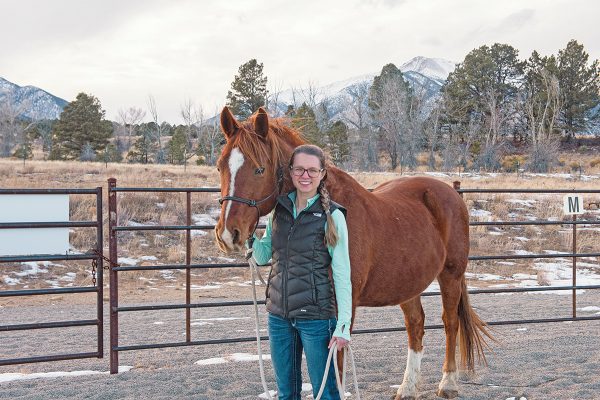
After deciding to pursue a career in chiropractic care, she attended Palmer College of Chiropractic in Iowa and completed an additional 240 hours learning about animal chiropractic through the Animal Chiropractic Education Source (ACES) in Texas.
Dr. Callie is a board-certified animal chiropractor through the Animal Veterinary Chiropractic Association (AVCA). Her passion for horses has only deepened since becoming an equine chiropractor!
When to Call an Equine Chiropractor
“Many people go to a chiropractor to help them with chronic pain, headaches, or mobility issues,” says Dr. Callie. “Just like people, animals can get aches and pains that make it uncomfortable to do the jobs we ask them to do. Chiropractic care can decrease an animal’s pain and improve their range of motion, making your rides even better.”
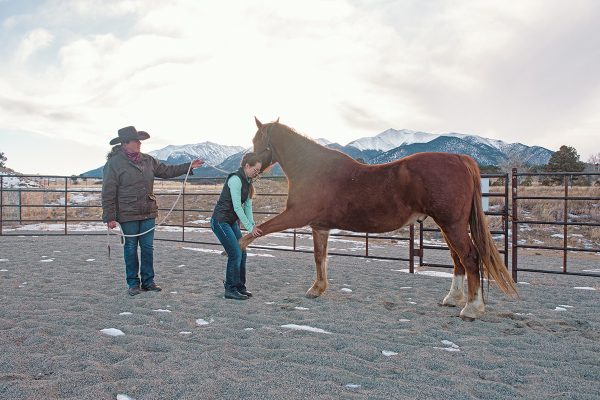
Some common signs that your horse may need chiropractic care include:
◆ Behavioral changes, such as girthiness or cinchiness when saddling.
◆ Inability or unwillingness to pick up a lead.
◆ Pinning the ears when asked to collect or extend stride.
◆ Avoiding contact through the bit.
◆ Flinching or tenderness around the spine, shoulders, or croup.
◆ Reduced lateral bending.
◆ Mild lameness.
◆ And other symptoms—every horse is different!
Path to Success
Becoming an equine chiropractor involves years of school and hard work.
“The first step to becoming an animal chiropractor is getting an undergraduate degree and taking the prerequisites needed to get into either veterinary or chiropractic school,” explains Dr. Callie. “Vet and chiropractic school both have their own sets of board exams you’ll need to pass to get your doctorate. Once you’re either a veterinarian or a chiropractor (or about halfway through school to become one), you can start post-doctorate courses to learn animal chiropractic as well.”
Dr. Callie learned canine and equine anatomy, neurology, adjusting techniques, and more through her education at ACES.
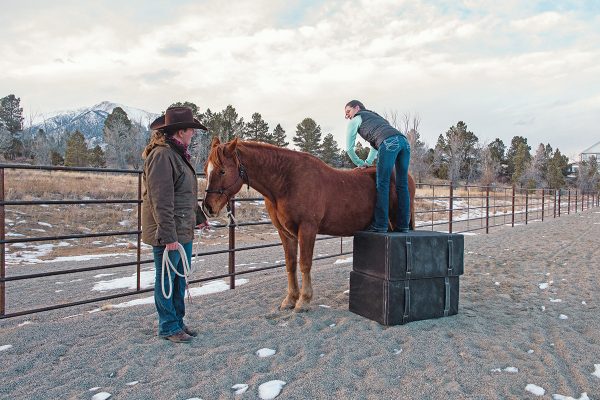
“It’s very important to choose a school that is approved through the AVCA or International Veterinary Chiropractic Association (IVCA),” she says. “After passing your animal chiropractic courses, you will be eligible to sit either the AVCA or IVCA boards for certification.”
Every state also has individual requirements needed to build your animal chiropractic business.
Equine Chiropractor Career Advice
There are dozens of equine careers available to aspiring young equestrians. No matter which route you choose to pursue, be sure to learn from everyone you can. Being a good listener and observer allows you to pick up knowledge that spans multiple equestrian disciplines, styles, and breeds.
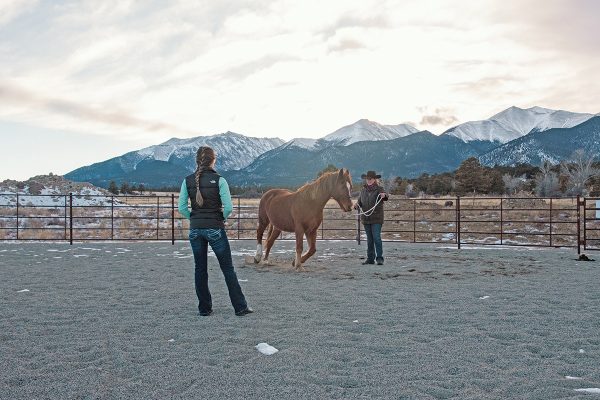
“Shadow everyone you can,” advises Dr. Callie. “Veterinarians, massage therapists, farriers, saddle fitters, and many other professionals can teach you about their specialty in the horse world. Understanding how every member of the horse’s care team works together will only make you a better care provider.”
Helping your horse feel his best every day starts with the smallest of tasks, such as grooming him thoroughly and checking for any new tender spots.
“Simple carrot stretches and topline exercises, such as belly lifts, can be great for helping your horse warm up and develop core strength,” she says. “Most importantly, be sure to keep on top of your horse’s farrier appointments and have an appropriately fitting saddle. If you invest in chiropractic care but the other areas of your horse’s wellbeing aren’t well managed, you can accidentally undo the work the chiropractor is doing.”
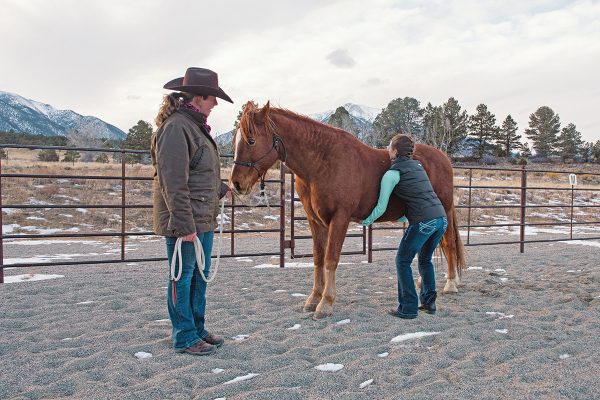
Dr. Callie has good reason for being so passionate about animal chiropractic care.
“Being an animal chiropractor has been so rewarding,” she says. “I love that I’m able to provide drug-free care to animals that helps decrease their musculoskeletal pain and increase their performance at their job. I especially love treating my equine patients because of the difference it makes for both horse and rider. It’s amazing to see them get out and work together more efficiently, whether that’s sorting cattle, giving a beginner lesson, or barrel racing.”
To learn more about equine chiropractors, check out the AVCA and IVCA websites at animalchiropractic.org and ivca.de.
This article about a career as an equine chiropractor appeared in the May/June 2023 issue of Young Rider magazine. Click here to subscribe!

